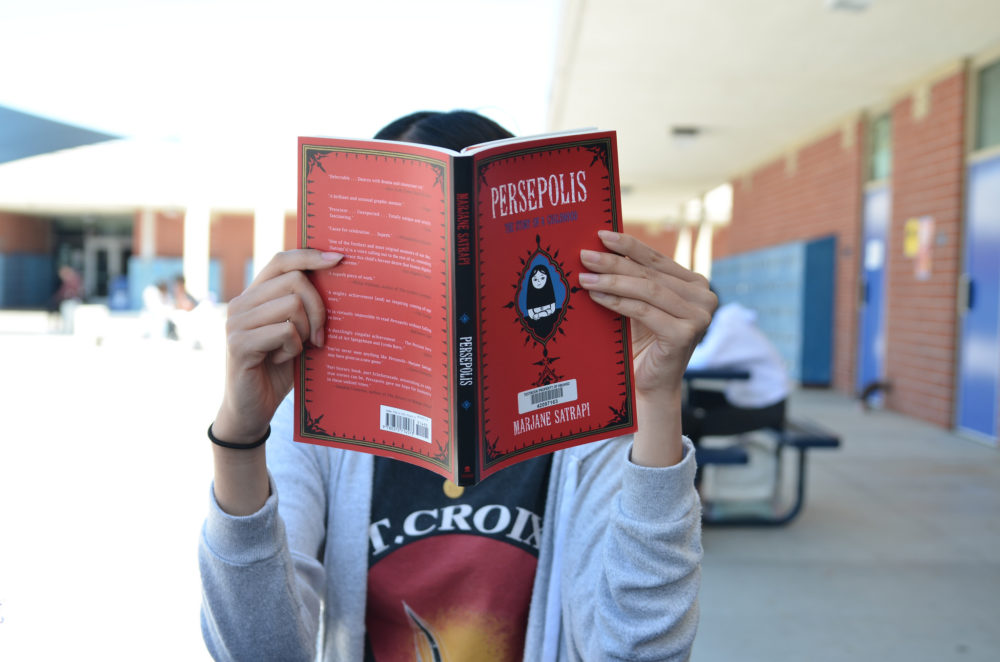
By Elise Tran, Staff Writer
This school year, sophomores read the graphic memoir Persepolis by Marjane Satrapi in their English classes. This is the first time that students were given a graphic novel as a core piece of literature.
“When I found out that the sophomores had a chance to read a graphic novel for class, I was surprised and excited since it’s not something that English classes ever let you do normally because [graphic novels] don’t seem to be very literary,” said sophomore Jacqueline Vu.
Persepolis follows the childhood of Marjane Satrapi during the Iranian Revolution in 1979. The memoir, originally published in 2000, was adapted to film in 2007.
Adopting any new textbook is a collaborative process between teachers at the school and district officials.
Last year, a group of sophomore teachers and the English language arts facilitator for the district generated a list of books they thought would work well in a world lit class. They eventually selected Persepolis and Little Princes. Those books were submitted to and approved by the school board.
Each teacher’s approach to the novel was naturally different, particularly in how they analyzed the text. Some teachers not only focused on the writing and captions but also on the drawings and their effects on the reader.
“In order to teach the graphic novel, we have to go over the differences in our vocabulary—so, talking about a panel and ways that line can affect mood and emotion,” said English teacher Taylor Stamper. “We used Understanding Comics, which is a very popular graphic novel, in order to help students prepare for that.”
The final project for students based on Persepolis is to create their own graphic memoir detailing an aspect of their life.
“I loved using Satrapi’s novel, Persepolis as a model for students to create their own graphic memoir,” Stamper said. “These memoirs helped us to see commonalities in our lives and better understand that we sometimes experience similar events, yet develop different perspectives.”
The reception of Persepolis garnered mixed reviews from students.
“If I’m being honest, I wasn’t a big fan of the graphic novel after reading it mostly because the story took more of a historical and literary approach which I’m not exactly a fan of, but I didn’t hate it either,” said Vu.
Students were also excited for the change and found the book easier to understand.
“So far, Persepolis has been really easy to understand and intriguing,” said sophomore Katherine Nguyen. “It has allowed me to explore a side of history from the perspective a rebellious girl who struggles to grow up and adjust to her new circumstances, all of which I enjoyed.”





